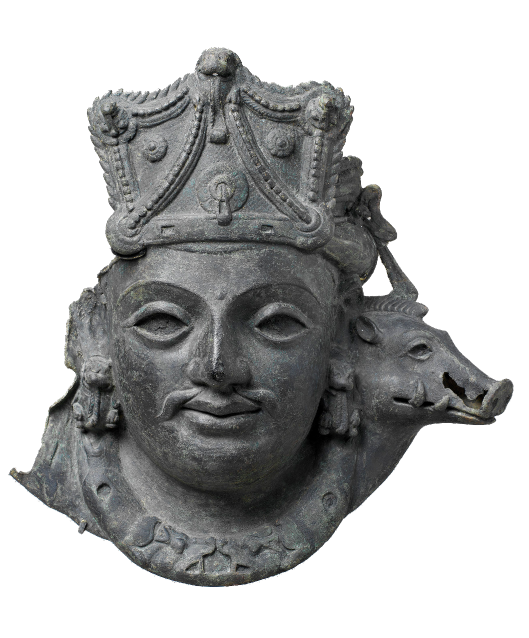PERSPECTIVES
From Paris to Patiala: Art Deco’s Indian Turn
Rewind to Paris, 1925. It is the Roaring Twenties with folks determined to put the horrors of World War I behind them. Out with the old is the new motto as “modernism” shapes fashion, art and architecture. France, ever stylish, seeks to re-establish itself as the country setting trends for avante garde design and hosts the Exposition Internationale des Arts Décoratifs et Industriels Modernes. Retroactively dubbed the “Art Deco” fair, the seminal event gives the design movement — one that has just started sprouting across Europe — its official name.
And now, here we are, a hundred years later in 2025, haunted by the 1920s style that defined an era. Look no further than Tesla’s robovan, the Cartier exhibition at the Victoria and Albert museum and Lanvin’s Fall collection with Deco-era patterns. In India too, the Art Deco style has seen a re-emergence, creeping into distinctly Indian expressions across various crafts, like Hanut Singh’s jewellery line or Raw Mango’s Art Deco collection. Nostalgia hasn’t looked this great in years.
Evolution of the “Indo-Deco” style
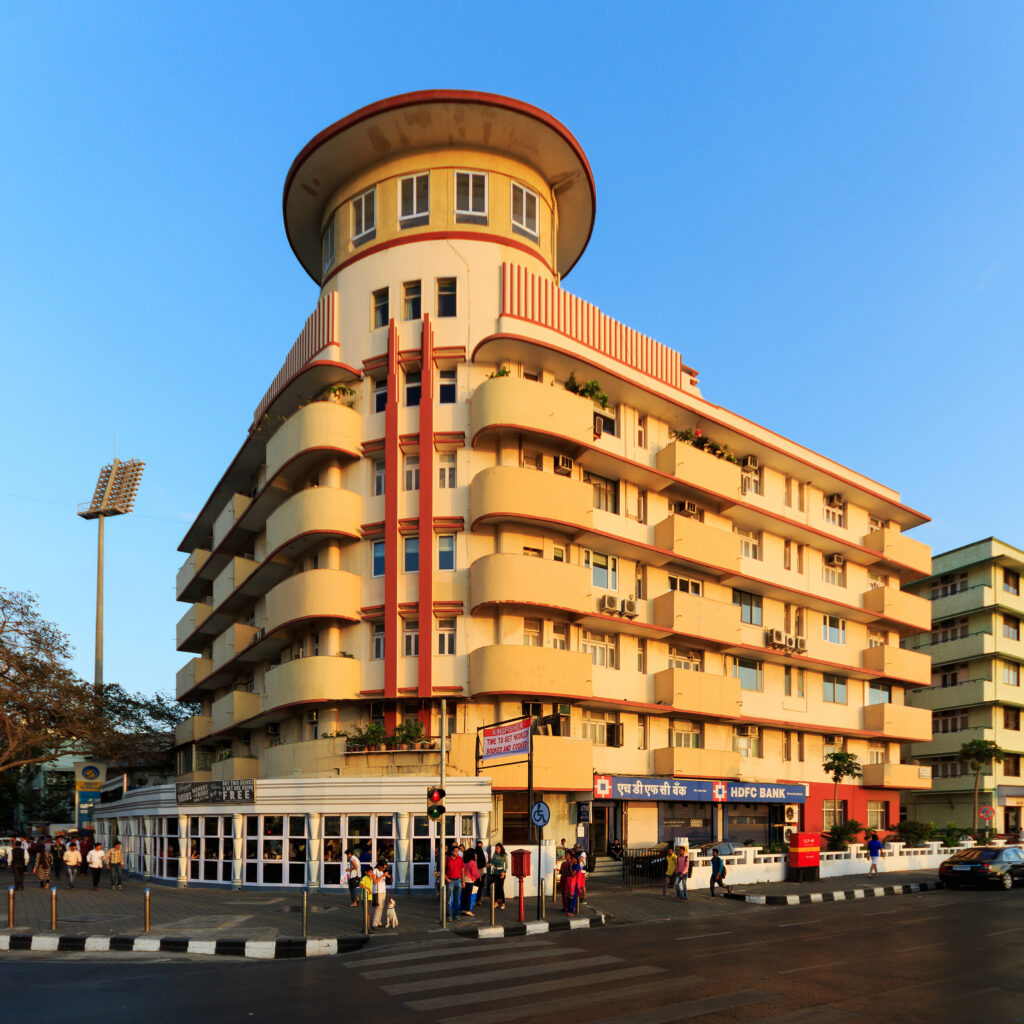
The beginning of the 20th century was marked by tremendous economic, social and technological transformation. Apart from the end of the “Great War,” the Second Industrial Revolution, also known as the Technological Revolution, had kickstarted a new age of prosperity. New occupations and ideas had people on the move in a world that seemed to have been set ablaze with modern thinking. The electric zeitgeist of the era soon came to be characterised by bold colours, striking geometries, and the luxurious appeal of Art Deco. Travelling from Europe to the Americas, the exuberant style soon reached the shores of British India.
Art Deco, which had its epoch-making moment at the 1925 Paris Exposition, was greatly influenced by both forward-looking perspectives and antiquity. Practitioners developed stylised imagery that drew inspiration from African and Meso-American art and architectural traditions. These motifs influenced the ‘exotic’ ornamentation that was eventually adapted to form distinct regional variants, one of them being Indian Art Deco or “Indo-Deco.”
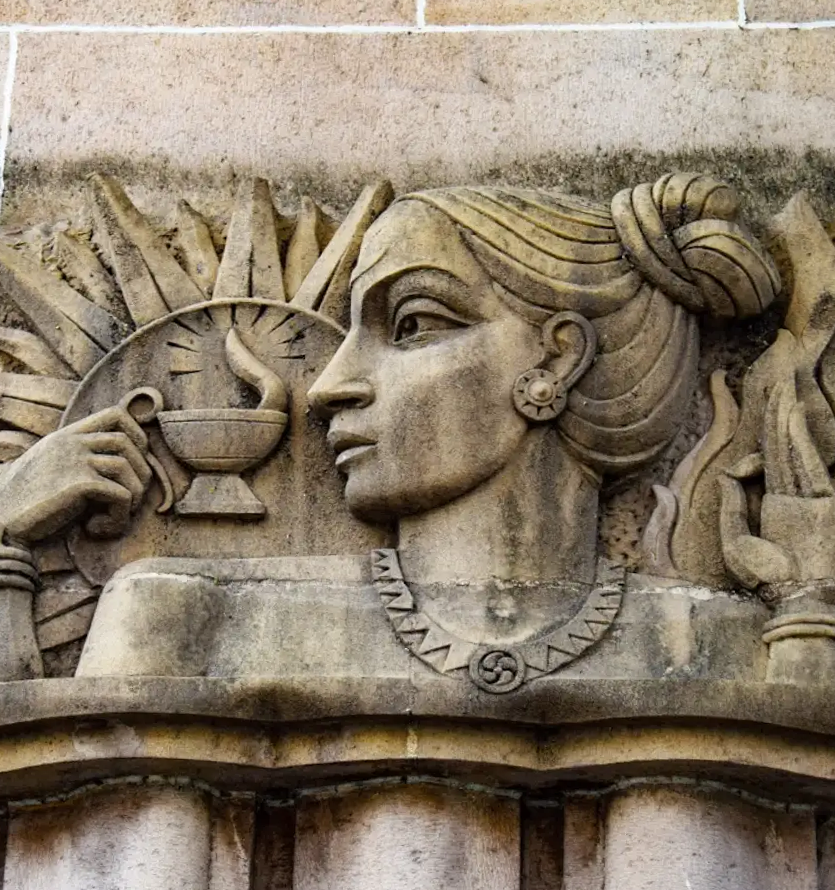
Some of the most notable examples of Art Deco in India exist in metros like Mumbai, Chennai and Delhi. Mumbai’s Marine Drive is an Art Deco promenade, a proud display of streamlined forms and nautical designs. Several buildings embraced opulent and exotic imagery, like the ancient Egyptian inspired exterior of the New India Assurance building at Fort. Elaborate Art Deco ornamentation also drew on older sculptured edifices that embodied Hindu and Mughal building traditions in the subcontinent, exemplified in the bas-reliefs seen in the Lakshmi Building and Onlookers Building.
Art Deco and Indian Modernity
Art Deco, in small Indian towns and big metropolises alike, became associated with aspirational spaces, like cinemas and sports clubs, affirming the idea of a modern nation. The style became intertwined with community identity, establishing the need for a unified aesthetic in specific neighbourhoods.
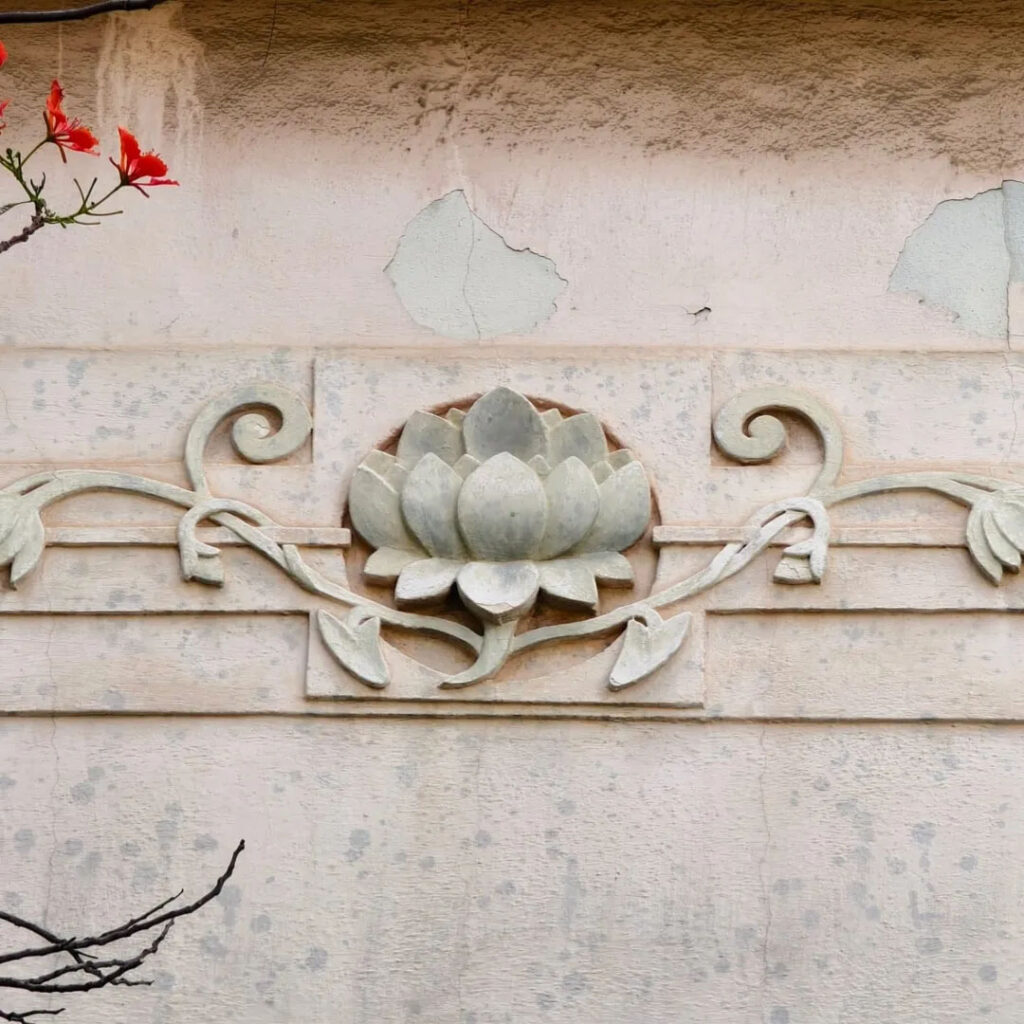
Stylistic influences appeared in the unmistakable curved balconies, repetitive concrete grills, and ornate motifs along the railings and facades of bungalows and apartment blocks in certain localities in cities, such as Shivaji Park in Mumbai or Jeera Colony in Secunderabad. In addition to Western designers, like H V Lanchester, Charles Stevens, and Eckart Muthesius, prominent Indian architectural firms, such as Mistry, Bhedwar, and Dastur; Master, Sathe and Bhuta; and L M Chitale and Son are credited with the widespread recognition of the style in India.
Single screen cinema halls, proudly bearing discernible deco arches and bands, became emblems of the Indian Art Deco style. Phul cinema in Patiala, Raj Mandir in Jaipur and Maratha Mandir in Mumbai, all designed by W M Namjoshi between the mid-1940s to the late 70s, stand as enduring reminders of a distant past that continues to resonate with today’s audiences. With its grand archways and sweeping staircase, Phul Cinema in particular, encapsulates the glamour of the golden age of cinema. The rhythmic fenestration and vertical fins on this cultural landmark created a visual grammar later modelled in another Indo-Deco building in Patiala — the Central State Library, built in 1955.
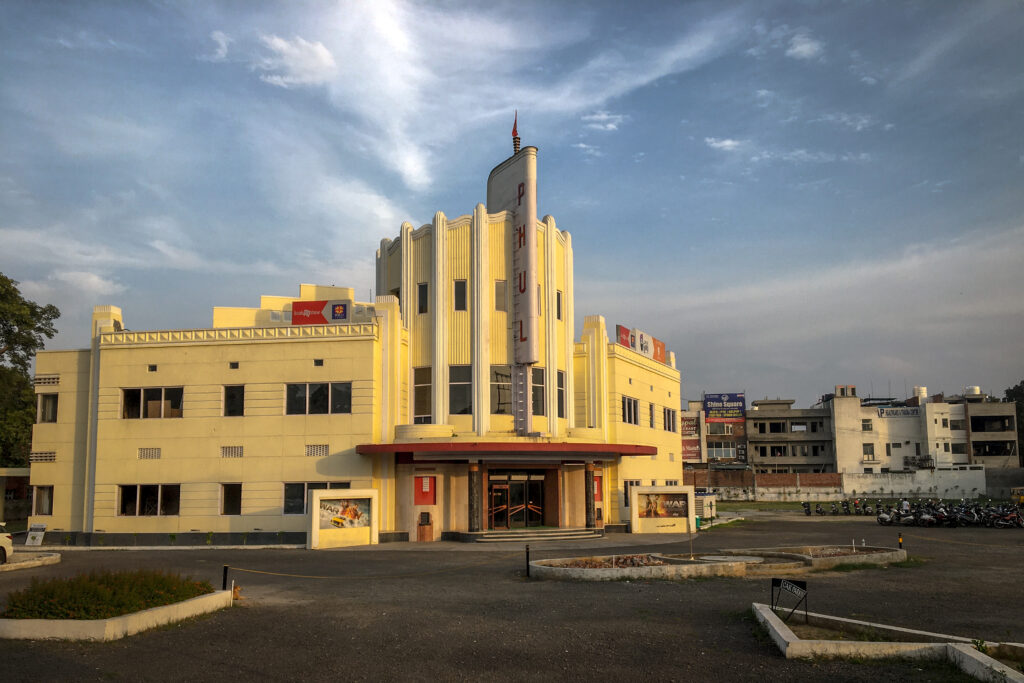
Economic reach greatly influenced access to materials and practitioners associated with Art Deco. It began to be championed by nobles, maharajas, and merchants, who brought back exotic materials and ideas from trips abroad, eager to usher in the age of modern architecture in the subcontinent. Most of these experiments began with the interiors of their own homes. They hired Western designers to redesign their mansions and palaces so they too could boast of being “modern,” and embrace the new ideas shaping the world.
One glorious example of how Art Deco was adapted to suit Indian sensibilities is the Umaid Bhawan Palace, constructed between 1929 and 1943. The palace interiors combined modern Western and traditional Hindu-Buddhist elements that characterised the Indo-Deco aesthetic. The venture was overseen by architect Henry Vaughan Lanchester and artist Stefan Norblin (who also worked on the Art Deco Morvi Palace, completed in 1942). The Umaid Bhawan Palace’s rooms were embellished with Lalique glassware, curved seating, and lavishly ornamented doors — hallmarks of the signature style that grew only more luxurious and ornamental with time. Smaller towns and villages were also quick to embrace the aspirational Indo-Deco “look,” making it their own in distinctive ways.

Meant for the Masses
Regional “variants” of the Art Deco style can still be seen across the subcontinent in mofussil neighbourhoods. Back in the day, it was the rural elite — zamindars and sarpanchs — who first embraced the sophistication of the modern style, fuelling the demand for “Desi-Deco” residences. Numerous buildings began to crop up in small towns, merging traditional motifs with “novel” Art Deco designs. Unconfined by the dictates of degree-bearing architects, local contractors and craftsmen played a key role in reinventing Indo-Deco for the masses, “tweaking” the ornate style to suit regional traditions, and the rigours of daily life.
Streetscapes of residential and retail areas began to be characterised by distinctive geometries and syncretic architectural features. Numerous commercial buildings in towns like Nanpara, Uttar Pradesh, combined aesthetics from Indo-Saracenic and Art Deco architecture. These ‘deco-esque’ inspirations were further distinguished by the use of trellis patterns, bas relief elements and streamlined forms. The confluence of Art Deco with traditionally Indian sensibilities can also be seen in the Indo-European aesthetics of the havelis in Sidhpur, merging influences from Art Deco, Baroque, renaissance, and neo-classical architectural styles. This brought about a visual jumble of gabled roofs, terrazzo floors, and ornate jharokas that served as status symbols representative of the influence and prosperity of the Dawoodi Bohra community.
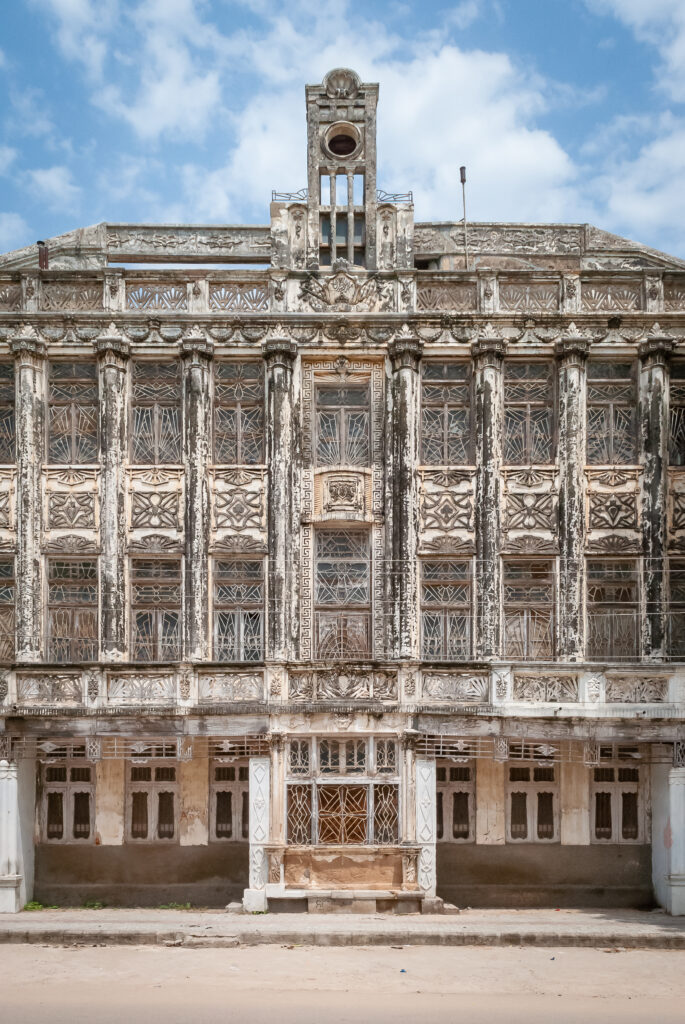
The village of Dharmaj in Gujarat, often referred to as one of India’s richest villages, boasts of 120 Art Deco buildings — all dating back to the 1930s and 40s — stemming from the style’s appeal amongst the Patidar community. Many residences, like the Sahajanand Bhavan, have similar sweeping horizontal bands with lattice-work in the balcony railings — reinforcing the common architectural language that defines this Indo-Deco village. Most of these projects were taken on by local contractors who began to incorporate Art Deco elements such as the frozen fountain motif, curvilinear forms, stepped profiles, nautical and tropical imagery across the exteriors and interiors of residential buildings. These patterns, motifs and curves also shaped furniture staples like tables, cupboards and storage units, revealing a cohesive design approach.
The well-traveled Chettiar community in Tamil Nadu were cosmopolitan in their decorative tastes as well. As a result, their ancestral homes are a potpourri of European and Tamil craft traditions. Traditional Chettiar architecture had already absorbed influences from the Gothic and Art Nouveau styles by the time Art Deco came around, which was also embraced by the community. The palatial mansion, Visalam, in Kanadukanthan, Tamil Nadu, is one example of how Art Deco was assimilated into Chettiar architecture. With the ever familiar stepped facade, the home exterior conforms to the style’s symmetry and visual expression. This is a sharp contrast to the interiors, which remain largely true to the traditional courtyard design of the Chettiars, excepting a few modernist touches in the railings and column ornamentation.
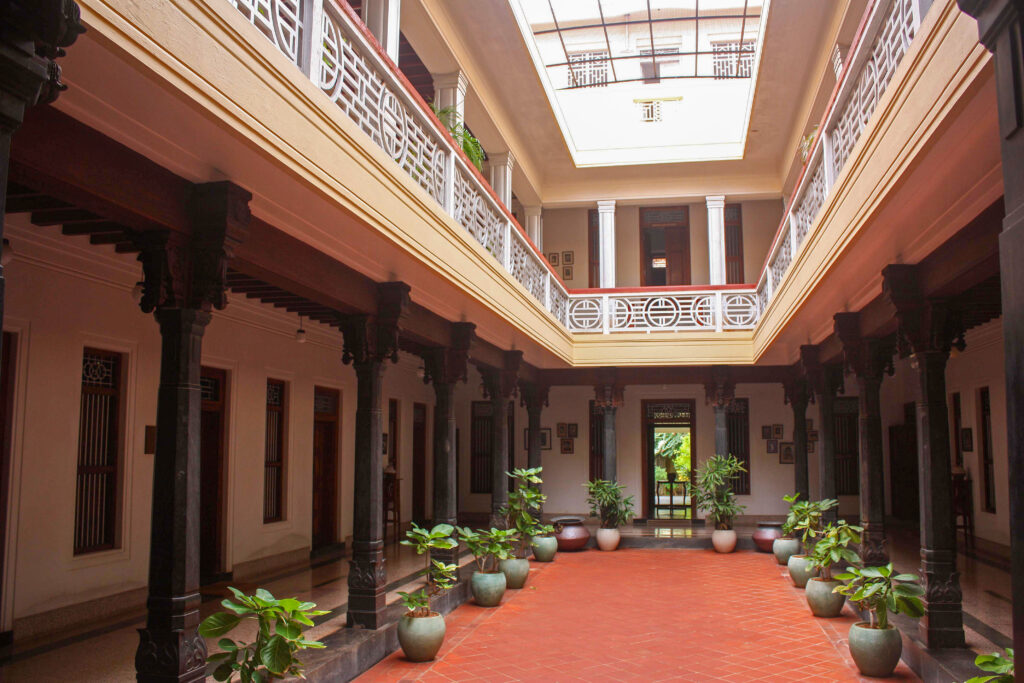
Art Deco’s footprint in India went beyond architecture. Cartier’s Patiala Ruby Choker, commissioned by the Maharaja of Patiala, is another example of the style’s popularity amongst Indian royals. The multi-layer necklace — one that fused Indian and European aesthetics — showcases the triangular motif in its final string, a tribute to the geometry of Art Deco design. Similarly, Yashwant Rao Holkar II, the Maharaja of Indore, was also known for his passion for the modernist style. In addition to commissioning German architect Muthesius to build the Manik Bagh Palace, the Maharaja assembled one of the most important private collections of Art Deco objects in the world.
While Art Deco’s embellishment and excess eventually fell out of fashion after World War II, Indo-Deco never really went out of fashion in India, in part because of the ingenuity, and largely uncredited work of Indian artisans, craftsmen and builders, who continued to incorporate elements of the style in their work.
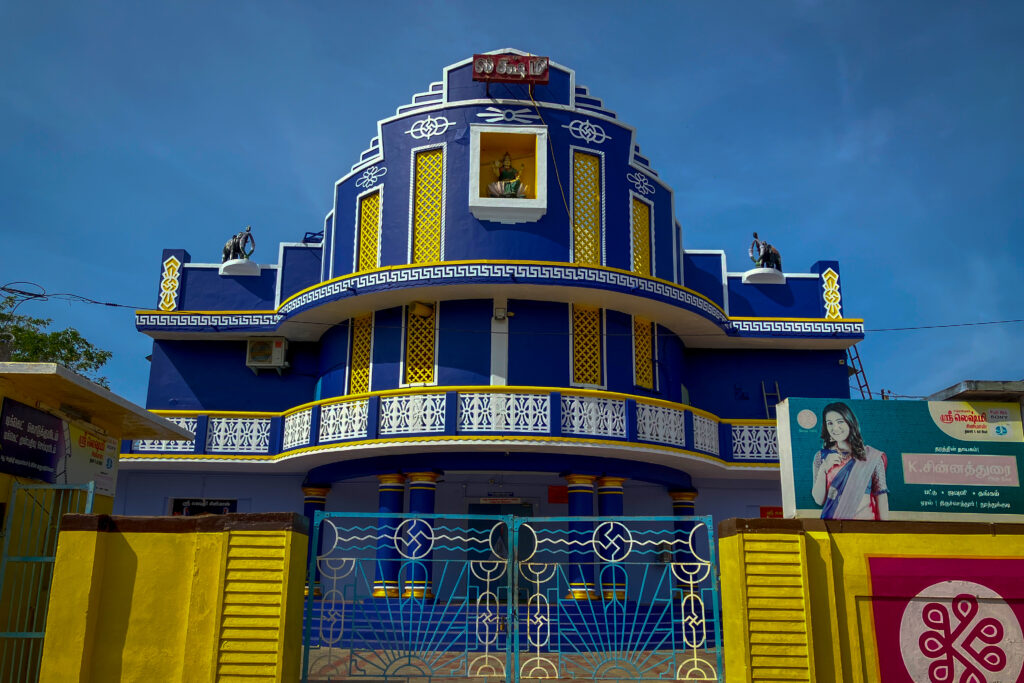
Growing interest in documentation and heritage conservation efforts have brought aspects of the movement back in vogue, a testament to the endurance of these nostalgic yet classic designs. A sunburst motif here, a curved chajja there — these little flourishes of Art Deco in Indian neighborhoods remind us of the modernist style that swept through a nation on the brink of freedom and limitless possibilities.
Sneha Sridhar is a multidisciplinary artist and designer interested in how storytelling, space, and cultural heritage can reimagine futures and alternate histories. She currently develops learning experiences and programs with the MAP Academy.
